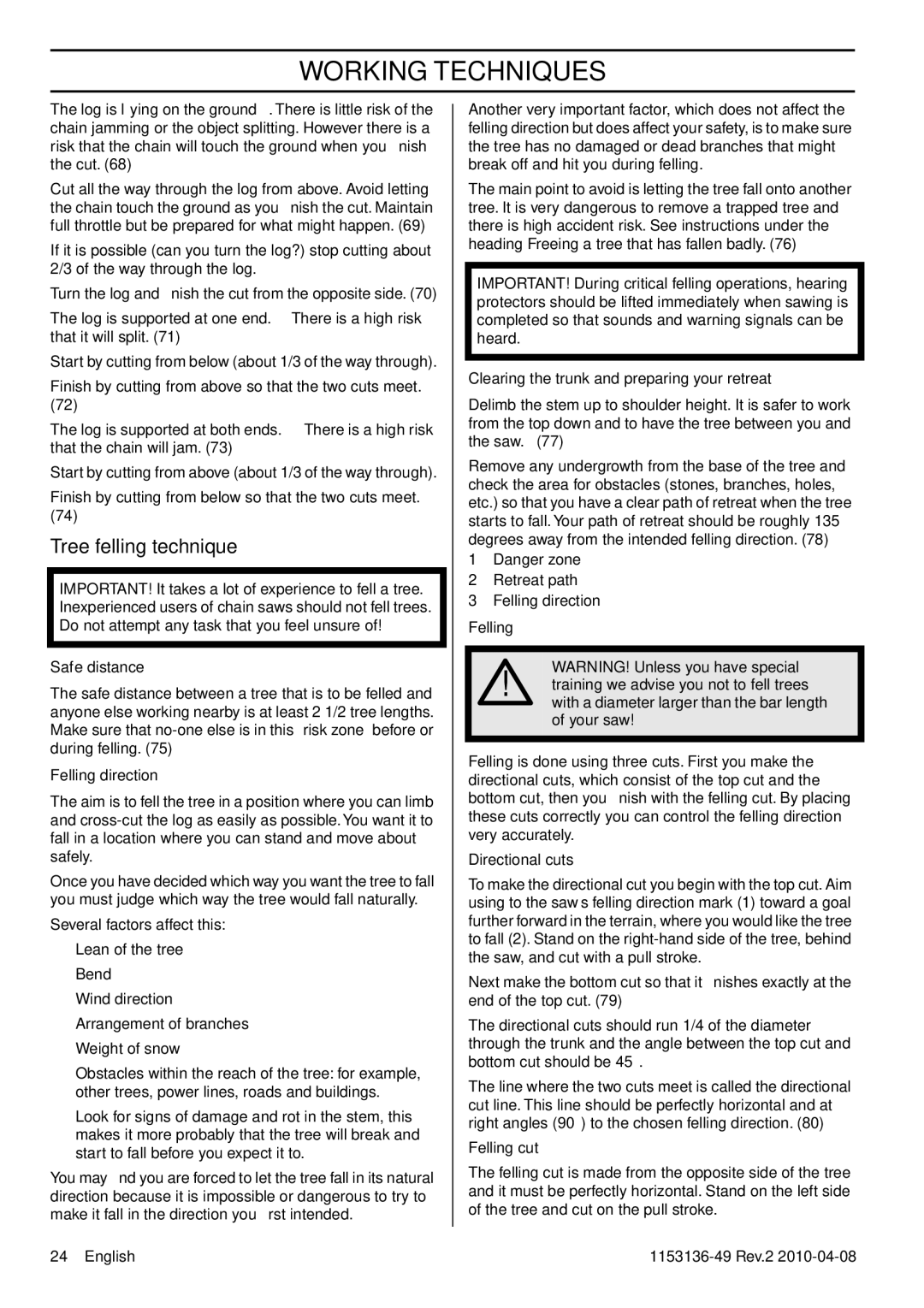1153136-49 specifications
The Husqvarna 1153136-49 is a reliable and high-performance chainsaw specifically designed for homeowners and occasional users who seek both power and ease of use. Its construction reflects Husqvarna's reputation for quality and innovation, making it a preferred choice among enthusiasts and those needing practical tools for yard and garden maintenance.One of the standout features of the 1153136-49 is its powerful engine. It is equipped with a sturdy and efficient 50.2cc X-Torq engine, which delivers excellent power output while minimizing fuel consumption and emissions. This means users can enjoy extended operation time with reduced environmental impact, which is increasingly important in today’s eco-conscious world.
The chainsaw boasts an impressive cutting length, making it suitable for a variety of tasks, from pruning branches to cutting firewood. With a bar length of 18 inches, it provides the versatility needed for light to medium-duty jobs, enabling users to tackle projects around their homes and gardens with ease.
Husqvarna has designed the 1153136-49 with user comfort and safety in mind. It features an ergonomic handle with a soft grip that reduces vibrations, allowing for longer periods of use without discomfort. The chainsaw also includes an advanced anti-vibration system, ensuring a smoother operation that minimizes strain on the user’s hands and arms.
Safety is paramount when using a chainsaw, and Husqvarna has integrated several key safety features in the 1153136-49. It comes with a chain brake that stops the chain in case of kickback, as well as low kickback chains that further enhance user safety during operation. The quick-release air filter simplifies maintenance and ensures optimal engine performance.
Another innovative feature is the tool-less chain tensioning system, which allows for easy adjustments on the go, ensuring that the chain remains tight and secure during use. This design not only saves time but also enhances overall safety.
In conclusion, the Husqvarna 1153136-49 is a powerful, efficient, and user-friendly chainsaw packed with features that enhance performance and safety. It is an ideal choice for homeowners and anyone looking to manage their outdoor tasks effectively. With a strong engine, ergonomic design, and safety features, it represents a smart investment for maintaining gardens and outdoor spaces.

